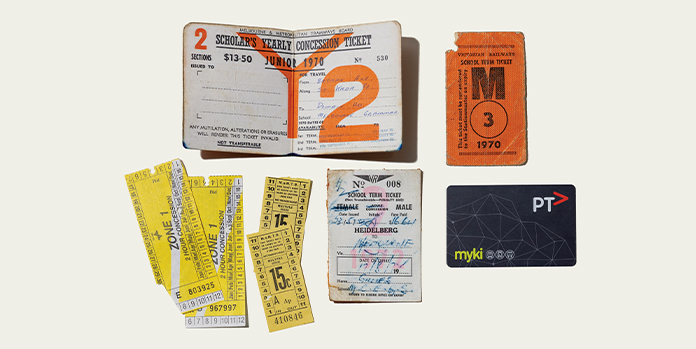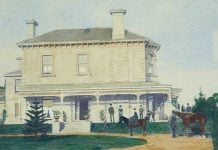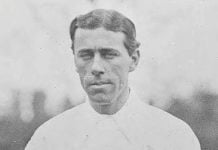“I, of course, walked to school, having hardly any distance to go. Some of the boys used to come on ponies, and would amuse themselves having races on the way. Two brothers whom I knew, drove to school in a sort of carriage drawn by a pair of shaggy ungroomed ponies.” – JH Thompson (OM 1861)
From the clip-clop of horse-drawn buggies, to the clatter of cable cars along St Kilda and Domain Roads, to the hum of modern commuter trams and trains, the evolution of transport has not only shortened the journey to school, but has broadened and reshaped the community our school serves.
When Dr Bromby arrived in 1858, he observed that there were “no streets”, and that the houses were “scattered in all directions for many miles around”.
Melbourne Grammar’s location, originally set well back from St Kilda Road, made it “secluded and private”.
In the School’s early days, horses were a common mode of transport for students and staff alike. It has been suggested that the rings still affixed to the bluestone outside the Headmaster’s office were once used for tethering horses.
School Captain Nick Langford (OM 2011) exercised what he understood to be his right, based on family lore, to ride his horse to school and tether it in 2011, making newspaper headlines.
New tram lines in Melbourne built during the 1880s boom made the South Yarra campus more accessible. In the 1888 Annual Report, Headmaster Ambrose Wilson wrote; “We have hitherto suffered from being rather inaccessible. But the opening of the two tram lines to the south of the Yarra gives the School easy communication with the most distant parts of St Kilda, Prahran, Windsor, Balaclava, Toorak, and also with Kew and Hawthorn and such distant parts of Melbourne as Carlton and Brunswick.”
Access from such “distant parts of Melbourne” has increasingly become easier, reducing commute times and making access possible for students living in suburbs even further afield. The role of boarding, once a necessity for many, now predominately serves those from regional, interstate or overseas locations.
Trams have operated along Domain Road in South Yarra for over a century, beginning with cable trams in the late 19th century, which were converted to electric in the 1920s. The line was famously served by a central interchange at Domain Junction and later formed part of a route connecting to the Botanic Gardens and St Kilda Road.
Access to Grimwade House has also been shaped by the Melbourne tram network. John Trinca (OM 1936), who attended Grimwade House between 1925 and 1931, fondly recounts his memories travelling to school by tram.
“When I was five, I was taken to school each day by John Starke (later Justice Sir John Starke), who was vice-captain of Austin House. We’d catch the tram from the corner of Toorak and Glenferrie roads and travel all the way to the Balaclava Road tram stop…”
Today, trams remain a popular transport mode for our students, as do bikes, cars, buses and trains in a reflection of the city’s population growth, technological advances and societal changes.
In 2017, the tram tracks were removed from Domain Road and Park Street to facilitate construction of the Metro Tunnel’s Anzac Station, which will change the landscape of transport for our student cohort once again, widening the reach of our school community.
Due to open early next year, the station will link the Sunbury line to the west via the Metro Tunnel, and the Cranbourne/Pakenham line to the east.
How do you remember getting to school? Share your memories with us at:
[email protected]



